In fall 2020, more than one million students left U.S. public school systems – with remote-only districts seeing the most substantial drops.
Remote-only districts saw a 42 percent higher enrollment decline, overall, compared to those offering in-person options, according to an analysis from Stanford University and the New York Times.
Kindergarten-aged students and those in rural areas were particularly likely to leave the public school system due to their districts opting for remote-only school.
The report demonstrates the importance of getting students back to school in person, even as the Indian ‘Delta’ variant drives surges.
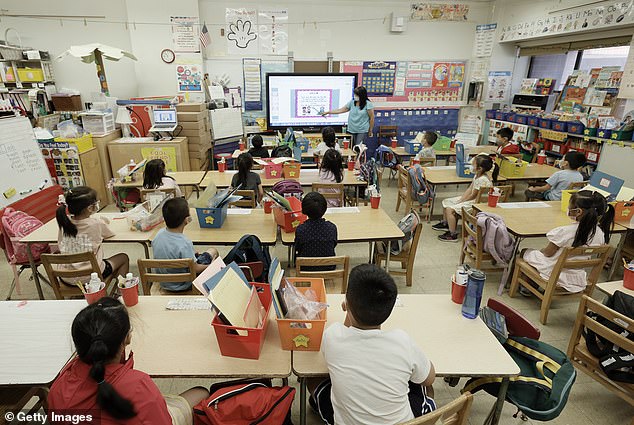
Over one million students left U.S. public school systems in fall 2020, a new analysis finds. Pictured: Summer students in New York City, July 2021
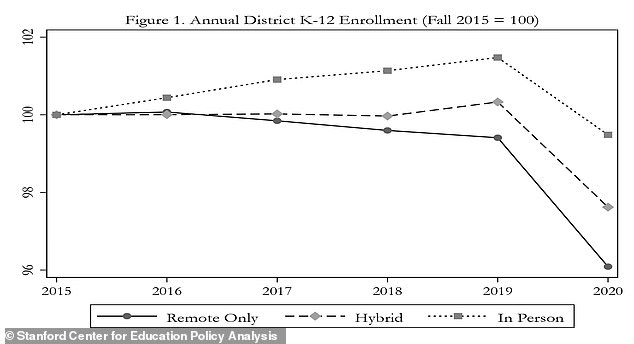
Remote-only districts had a 42% lower enrollment decline than in-person districts and hybrid districts
Over the past year, researchers, educators, and parents alike have learned that remote learning is detrimental for K-12 students.
While keeping kids out of classrooms was a key mechanism for preventing COVID-19 spread – especially early in the pandemic – research has shown that Zoom school was bad news for both students’ academic abilities and mental health.
The shift to remote impacted students in a way that worsened pre-existing divides. Students of color, low-income students, those in rural areas, and others with fewer resources were less able to weather the transition.
Despite these issues, many students did not go back to school in person during the fall 2020 semester.
In the fall of 2020, over half of U.S. public school students only had access to remote learning. Many of them stayed remote through the entire school year.
A new study shows that many of those students who didn’t have access to in-person learning dropped out of the public school system entirely.
For the analysis, published online on August 7, researchers at the Stanford Graduate School of Education collaborated with Big Local News – a project of Stanford’s Computational Journalism Lab – and the New York Times.
The researchers examined school enrollment across six years, from the 2015-2016 school year to the 2020-2021 year.
They used enrollment data from state and federal sources, paired with reopening information from Burbio – a data research platform that tracks districts’ learning modes.
The analysis included a total of 875 districts representing about 35 percent of public school students.
Overall, the researchers found a sharp enrollment decline in fall 2020 compared to the previous year.
Nationwide, enrollment fell by two percent – a loss of 1.1 million students.
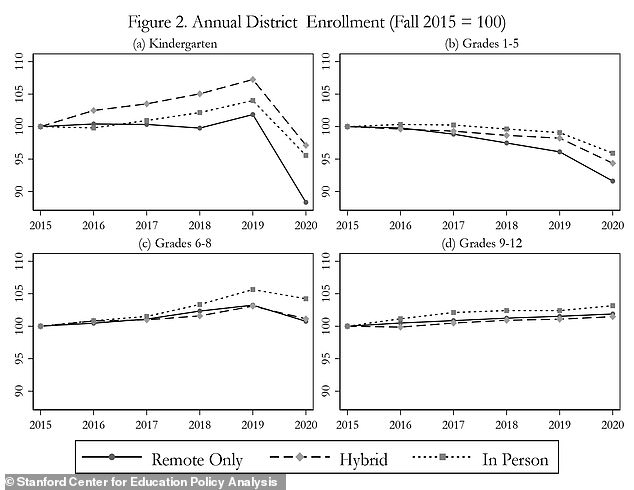
Kindergarten students in remote-only districts were more likely to leave the public school system than their older peers
‘Public school enrollment typically increases from year to year, but it fell sharply in the fall of 2020,’ said Thomas Dee, Stanford Graduate School of Education professor and one of the study’s authors, in a news release.
‘We found that districts that adopted remote-only schooling had significantly larger enrollment declines than those that offered face-to-face schooling.’
Specifically, the districts that offered face-to-face options saw a 2.6 decline in enrollment overall, while those that offered only remote saw a 3.7 percent enrollment decline.
That means a 42 percent higher enrollment decline for the remote-only districts.
The researchers also found a dramatic difference in kindergarten enrollment. They estimated that, overall, remote-only districts saw a ten percent enrollment decline in kindergarten students.
This decline was especially high in states where kindergarten is optional – many parents opted to skip the grade and enroll their students in first grade the following year.
Enrollment declines were also higher for remote-only districts in rural areas.
‘So there’s still a lot to be learned about this,’ Dee said. ‘For example, access to high-speed broadband and digital devices may influence how parents in rural communities judged the appeal of remote instruction.’
In addition, the researches found higher enrollment declines for remote-only districts serving more Hispanic students – and fewer black students.
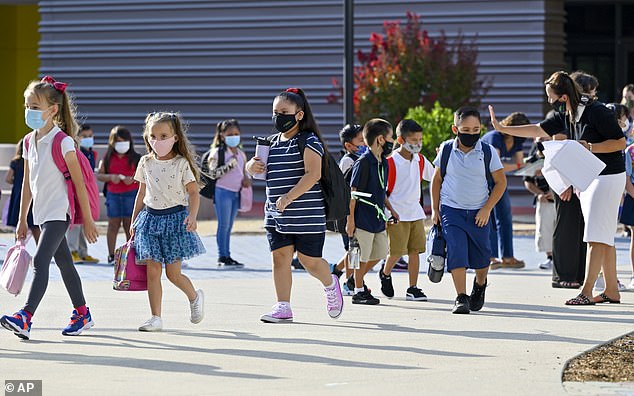
The analysis indicates that many parents prefer in-person learning. Pictured: Students head to class on the first day of school in Anaheim, California, August 2021
The researchers note that some parents may have taken their children out of public school because they wanted an in-person option – while others may have been in the opposite situation, wanting virtual-only and not finding that provided.
But overall, the study indicates that many parents prefer in-person learning – to the point of taking their kids out of schools if remote is the only learning mode available.
The findings support many districts’ decisions to return to in-person learning in fall 2021, even as the Delta variant drives Covid surges across the U.S.
Still, last year’s enrollment drop could have long-term implications for the districts that lost students.
Many students who skipped or delayed kindergarten last year will now be entering schools, Dee said. This will lead teachers to have bigger classes with a mix of ages.
Other, older children may have to navigate the impacts of catching up on coursework.
‘These results also suggest an imminent fiscal challenge to public schools if student enrollment doesn’t rebound,’ Dee said. ‘My best guess is that many of these students aren’t returning.’
‘As parents confront the uncertainty of the coming year and what their local public schools will offer, they may view their new accommodations as a safe harbor.’
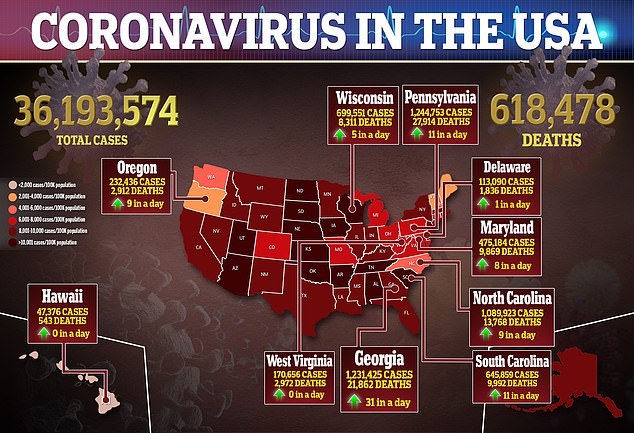
Source link : https://www.dailymail.co.uk/health/article-9888631/More-1-1-million-kids-left-public-schools-fall-2020-analysis-finds.html











